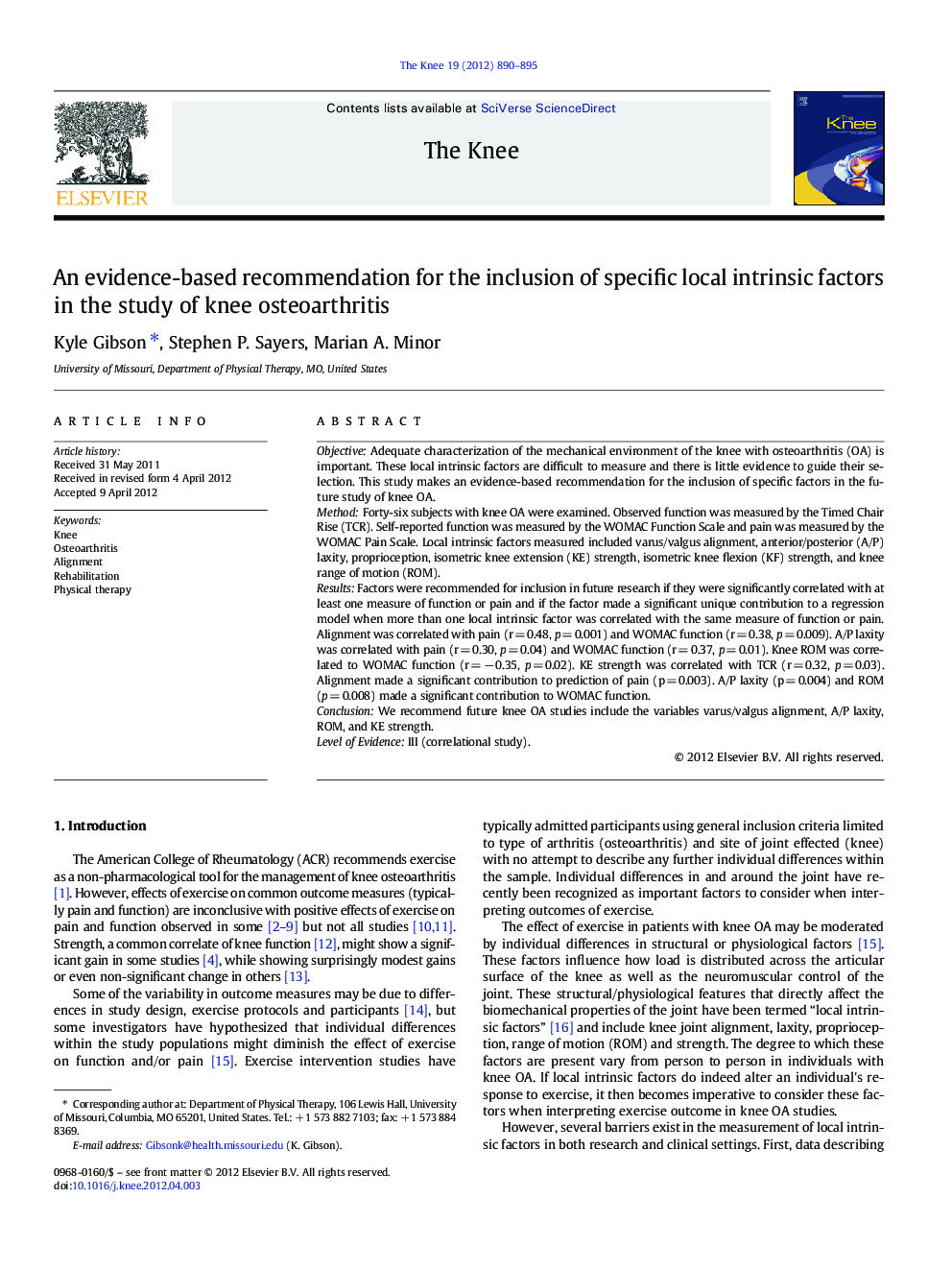| کد مقاله | کد نشریه | سال انتشار | مقاله انگلیسی | نسخه تمام متن |
|---|---|---|---|---|
| 4077768 | 1267229 | 2012 | 6 صفحه PDF | دانلود رایگان |

ObjectiveAdequate characterization of the mechanical environment of the knee with osteoarthritis (OA) is important. These local intrinsic factors are difficult to measure and there is little evidence to guide their selection. This study makes an evidence-based recommendation for the inclusion of specific factors in the future study of knee OA.MethodForty-six subjects with knee OA were examined. Observed function was measured by the Timed Chair Rise (TCR). Self-reported function was measured by the WOMAC Function Scale and pain was measured by the WOMAC Pain Scale. Local intrinsic factors measured included varus/valgus alignment, anterior/posterior (A/P) laxity, proprioception, isometric knee extension (KE) strength, isometric knee flexion (KF) strength, and knee range of motion (ROM).ResultsFactors were recommended for inclusion in future research if they were significantly correlated with at least one measure of function or pain and if the factor made a significant unique contribution to a regression model when more than one local intrinsic factor was correlated with the same measure of function or pain. Alignment was correlated with pain (r = 0.48, p = 0.001) and WOMAC function (r = 0.38, p = 0.009). A/P laxity was correlated with pain (r = 0.30, p = 0.04) and WOMAC function (r = 0.37, p = 0.01). Knee ROM was correlated to WOMAC function (r = − 0.35, p = 0.02). KE strength was correlated with TCR (r = 0.32, p = 0.03). Alignment made a significant contribution to prediction of pain (p = 0.003). A/P laxity (p = 0.004) and ROM (p = 0.008) made a significant contribution to WOMAC function.ConclusionWe recommend future knee OA studies include the variables varus/valgus alignment, A/P laxity, ROM, and KE strength.Level of EvidenceIII (correlational study).
Journal: The Knee - Volume 19, Issue 6, December 2012, Pages 890–895